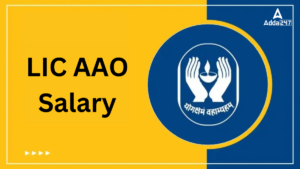Q1. Which of the following is not the monetary tool?
(a)SLR
(b)Deficit financing
(c)CRR
(d)Open Market Operations
(e)None of these
Q2.Which of the following is a Quantitative instrument of Monetary Policy?
(a)SLR
(b)Repo rate
(c)CRR
(d)All of the above
(e)None of these
Q3. Who is the chairperson of the Monetary Policy Committee of India?
(a) Governor of Reserve Bank of India
(b) Prime Minister
(c)Chief Economic Advisor
(d) Finance Minister
(e)None of these
Q4. The banks are required to maintain a certain ratio between their liquid assets and total deposits. This ratio is called
(a) Central Liquid Ratio
(b) Capital Adequacy Ratio
(c) Statutory Liquidity Ratio
(d) Cash Reserve Ratio
(e)None of the above
Q5.How many times RBI announces monetary policy in a year?
(a)6
(b)3
(c)2
(d)4
(e)5
Q6. When the cash reserve ratio (CRR) is increased by the RBI, it will:
(a) No impact on the supply of money in the economy
(b) Initially increase the supply but later on decrease automatically
(c) Decrease the supply of money in the economy
(d) Increase the supply of money in the economy
(e)None of the above
Q7.How many members are in monetary policy committee?
(a)2
(b)8
(c)6
(d)3
(e)4
Q8. Bank rate is the rate at which the Reserve Bank of India provides loans to
(a) Commercial banks
(b) Private corporate sector
(c) Non-banking financial institutions
(d) Public sector undertakings
(e)None of these
Q9.Which of the following is not the objective of RBI’s monetary policy?
(a) Stability of external value
(b) To prevent the commercial banks from making excessive profits
(c) Maintenance of domestic price level
(d) Reducing the impact of business cycles
(e)None of these
Q10. Monetary Policy is known as which type of body?
(a)Constitutional body
(b)Statutory body
(c)Non-statutory body
(d)Unconstitutional body
(e)None of these
Solutions
S1.Ans(b)
Sol. Deficit financing is not the monetary tool.
S2.Ans(d)
Sol. The quantitative instruments are: Open Market Operations, Liquidity Adjustment Facility (Repo and Reverse Repo), Marginal Standing Facility, SLR, CRR Bank Rate etc.
S3.Ans(a)
Sol. The chairperson of the Monetary Policy committee of India is Governor of Reserve Bank of India.
S4.Ans(c)
Sol. The banks are required to maintain a certain ratio between their liquid assets and total deposits. This ratio is called as Statutory Liquidity Ratio.
S5.Ans(d)
Sol. The meetings of the Monetary Policy Committee are held at least 4 times a year and it publishes its decisions after each such meeting.
S6.Ans(c)
Sol. When the cash reserve ratio (CRR) is increased by the RBI, it will decrease the supply of money in the economy.
S7.Ans(c)
Sol. The committee comprises six members – three officials of the Reserve Bank of India and three external members nominated by the Government of India.
S8.Ans(a)
Sol. Bank rate is the rate at which the Reserve Bank of India provides loans to Commercial banks.
S9.Ans(b)
Sol. Objectives of Monetary Policy are: Stability of external value, Maintenance of domestic price level, Reducing the impact of business cycles.
S10.Ans(b)
Sol. The Monetary policy committee is a statutory body established under the provisions of RBI act 1934.
Click Here to Register for Bank Exams 2020 Preparation Material




 GA Capsule for SBI Clerk Mains 2025, Dow...
GA Capsule for SBI Clerk Mains 2025, Dow...
 The Hindu Review October 2022: Download ...
The Hindu Review October 2022: Download ...
 LIC AAO Salary 2025, Revised Structure, ...
LIC AAO Salary 2025, Revised Structure, ...





